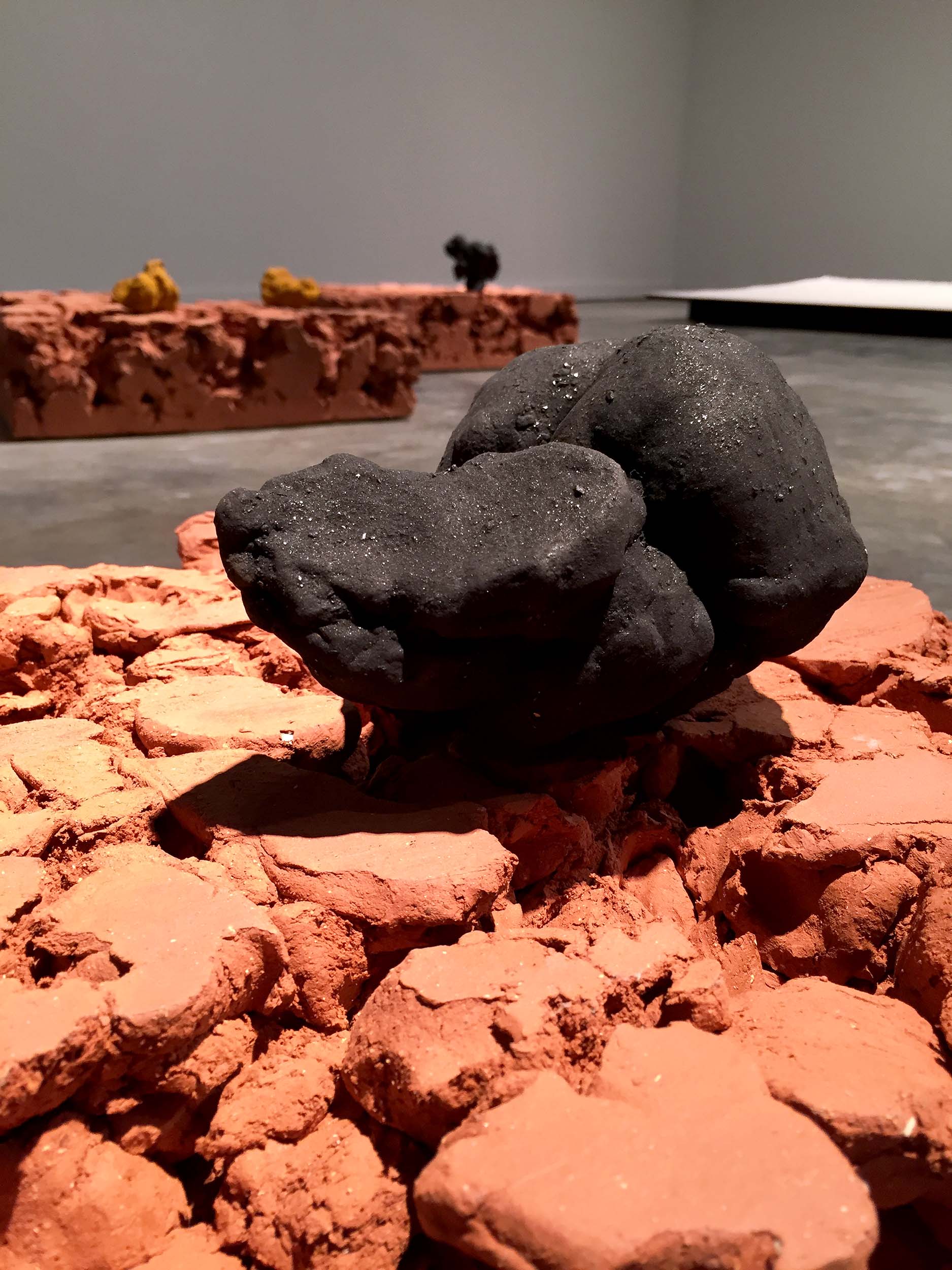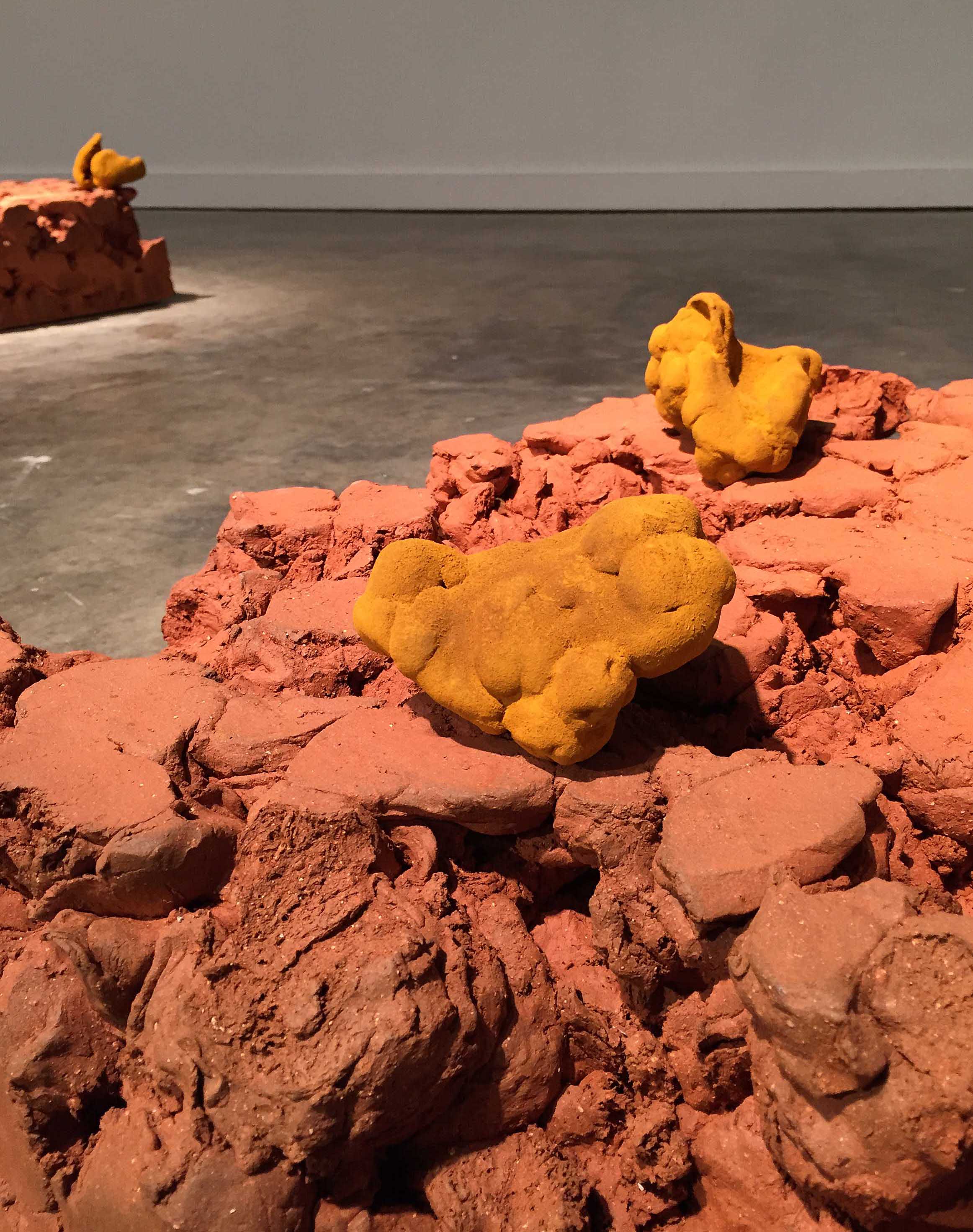Pillar Robbing, for the exhibition Material Histories: Cultures of Resistance, curated by Alex Hibbitt, The Majestic Galleries, Nelsonville, Ohio, 2017. Ceramic made from Logan Sewer Pipe Clay, harvested AMD (Acid Mine Drainage) yellow iron from a seep, coal.
Photograph Cassidy Brauner
Photograph Daniel King
Photograph Daniel King
Zine page for Clay Belt of the Rust Belt fanzine print publication
https://www.ohio.edu/fine-arts/news/material-histories-opens-september-29
https://www.ohio-forum.com/2017/10/material-histories-symposium-art-politics-social-justice-oct-13/
https://woub.org/2017/09/29/material-histories-cultures-of-resistance-opens-sept-29/
Short Statement for Pillar Robbing
Pillar Robbing is an installation created on residency in Northern Appalachia’s coal country. “Robbing the Pillars” was an underground mining technique, in which final removal of coal pillars caused rooms to cave and the land above to drop. In perpetuity, this continues to change the upper terrain and alter the environment. I harvested Acid Mine Drainage (AMD) iron from a local seep, coal, and Logan Sewer Pipe Company’s clay/shale body (bedded with the coal and mined as it has been in the area since 1890). Organ-like forms on visceral blocks reference plats of land sold during the development of boom and bust towns, each corresponding to the mineral wealth below.
Long Statement for Pillar Robbing
I researched and developed Pillar Robbing in Northern Appalachian coal country during an Artist Residency in Ceramics at Ohio University in Athens, to make installation artwork for the 2017 exhibition Material Histories: Cultures of Resistance at The Majestic Galleries in neighboring Nelsonville, Ohio.
The artwork was created from native materials, industry, and raw sites, which became points of connection within the community. Pillar Robbing was a direct response to my experiences as a foreigner in this culturally distinct region, and to Appalachian Ohio’s 200-year history of coal and clay mineral extraction. Mining continues to shape the local economy, culture and environment.
Pillar Robbing is made from trace amounts of remaining mineral (coal and clay), and leavings from mining dumps and structural collapses that continuously reshape physical terrain and cultural identity. “Robbing the pillars” was a support and retreat underground mining technique. For the greatest profit, coal pillar supports initially left, were taken away after all other coal in the seam was removed. This caused the rooms to cave in and the land above to drop at some point. Current mining practices and environmental reclamation efforts, often brought in by outside groups, add to the earth tapping, filling, plugging, and piling.
I collected and processed Acid Mine Drainage (AMD) iron, known as “Yellow Boy” from Monday Creek. AMD “systems and seeps” are a vast network of abandoned underground coal mines that spill acidic heavy metal laden water into waterways, killing aquatic life. I also used Logan Sewer Pipe Company’s clay/shale body (bedded with coal and mined as it has been since 1890).
Boom and bust towns, social structures, and environmental hazards such as subsidence are sites that physically correspond to mineral wealth. These sites have clustered with gob piles on the land after it was platted and sold in real estate ventures with the assistance of government. Wealth and power, however, have not locally accumulated. Residents shared with me both intense pride for, and shame in their discarded surroundings. They spoke of an intellectual and cultural divide from “outsiders”.
As a visitor, research on local matters in Appalachia began with a process of questioning how to confront my biases and privilege. I approached taking up temporary residence to create Pillar Robbing through materials, stemming from experiences in ceramic processes and industry. It brought forth a mechanism from which to connect across community borders and within micro-regions that aren’t culturally monolithic.

